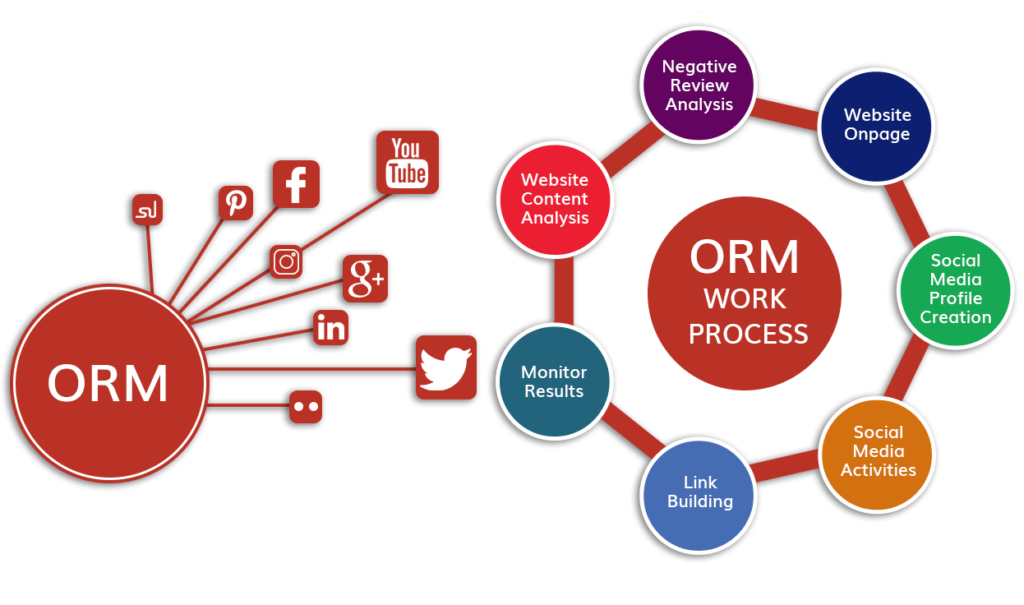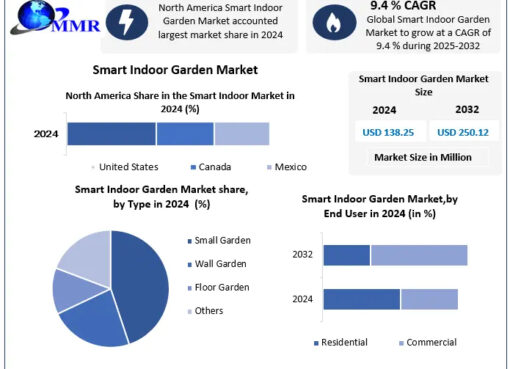Strategies for Managing ORM in B2B Versus B2C Industries

Online reputation management (ORM) has become a foundational element in how companies shape their brand image and foster customer trust in the U.S. business landscape. Although all businesses benefit from a strong online reputation, the ORM strategies for B2B (business-to-business) and B2C (business-to-consumer) industries differ significantly.
B2B companies operate in markets where long-term relationships, credibility, and niche reputation are critical, as decision-making often involves multiple stakeholders. For these businesses, ORM strategies are focused on thought leadership, industry-specific credibility, and professional networking.
Conversely, B2C companies interact directly with end consumers, where public perception and customer reviews are more immediate and visible. Here, ORM centers on managing customer satisfaction, responding to feedback and ensuring a positive image that resonates with a wider, often more diverse, audience.
The distinction in strategies is rooted in the varying expectations and needs of B2B and B2C customers. While both markets operate online, B2B customers typically value expert insights, case studies, and business endorsements, while B2C consumers look for a strong brand reputation, quick response times, and consistent quality of service.
Understanding ORM in B2B vs. B2C Contexts
In B2B markets, ORM revolves around establishing authority and demonstrating expertise within a specific industry. Businesses seek to nurture relationships by building trust and credibility over time. Meanwhile, ORM in B2C involves shaping customer perception through direct communication, customer service excellence, and responsiveness to feedback across multiple platforms.
- Audience Characteristics and Expectations
- B2B: The B2B audience typically consists of industry professionals, decision-makers, and stakeholders who prioritize reliability, transparency, and technical expertise. ORM efforts focus on producing in-depth, high-quality content that showcases the company’s thought leadership and domain knowledge, as B2B clients often engage with brands that demonstrate competence.
- B2C: B2C customers seek immediate gratification, often influenced by online reviews, brand reputation, and the company’s responsiveness to complaints and feedback. In the B2C realm, ORM emphasizes engaging directly with customers on social media, responding to reviews, and delivering a consistently positive experience that appeals to a broader demographic.
- Content Creation and Thought Leadership
- B2B: For B2B, ORM includes producing industry-related content such as white papers, case studies, webinars, and blog posts that demonstrate expertise and build a reputation as a trusted authority. U.S. companies often leverage LinkedIn, industry forums, and niche publications for visibility.
- B2C: In contrast, B2C companies emphasize content that builds emotional connections and fosters brand loyalty. Social media platforms like Instagram, Twitter, and Facebook are essential for ORM, as these channels enable direct communication and instant feedback. Content like blog posts, videos, and influencer partnerships can play a crucial role in ORM by enhancing customer trust and encouraging positive public perception.
- Handling Customer Feedback and Complaints
- B2B: B2B ORM focuses on personal, professional communication channels, often managing reviews and complaints through direct client communications, such as emails or LinkedIn messages. A company’s response to feedback is tailored, demonstrating accountability and a willingness to address issues. This approach fosters long-term client relationships and reinforces reliability.
- B2C: For B2C companies, handling feedback is often more public. Platforms like Google My Business, Yelp, and product review sites require prompt responses to both positive and negative reviews. Addressing complaints with professionalism and empathy can improve brand perception and foster customer loyalty. ORM strategies here involve setting up a dedicated customer service team to monitor and respond to public feedback quickly.
- Engaging with Online Reviews
- B2B: Online reviews in the B2B sector are typically less frequent but hold high value, often impacting decisions at the executive level. Platforms such as Clutch, Trustpilot, and LinkedIn play a significant role in B2B ORM. Positive reviews are shared strategically to attract more professional interest and solidify trust, while negative reviews are addressed with a thoughtful, direct response.
- B2C: B2C companies manage reviews across a broad spectrum of platforms, including Yelp, Google Reviews, Amazon, and industry-specific review sites. ORM strategies here include actively encouraging satisfied customers to leave reviews and promptly responding to negative feedback. By promoting positive testimonials and resolving issues publicly, B2C companies strengthen their brand image and encourage consumer trust.
- Platform Selection for ORM
- B2B: LinkedIn, industry blogs, and business-oriented review sites are central to B2B ORM. These platforms allow B2B companies to engage with a targeted audience, providing valuable insights and showcasing company achievements in a professional environment.
- B2C: B2C ORM spans multiple consumer-facing platforms, including social media, e-commerce sites, and online directories. Social media giants like Instagram and Facebook, where customer interaction is more personal and frequent, are essential for B2C ORM. By selecting the right mix of platforms, B2C brands can reach consumers on their preferred channels, fostering a sense of connection and accessibility.
Tools and Techniques for Effective ORM in B2B and B2C
- Monitoring Tools
Using monitoring tools like Google Alerts, Brandwatch, and Sprout Social can streamline ORM for both B2B and B2C. B2B companies may use these tools to keep track of industry-related discussions and mentions by professionals, while B2C businesses monitor reviews, social media comments, and direct feedback from customers to identify areas needing improvement. - Crisis Management Plans
Having a proactive ORM crisis management plan is essential. B2B businesses should focus on ensuring communication aligns with industry standards and maintains professionalism, while B2C businesses may take a more direct, public approach to assure customers that issues are being resolved. In both cases, response time and tone are critical. - Leveraging SEO for ORM
ORM strategies for both B2B and B2C benefit from SEO. Optimizing content with reputation-enhancing keywords can ensure positive results appear in search engine results. For B2B, this may involve publishing thought leadership content, while B2C companies focus on keywords related to customer satisfaction and service reliability.
Best Practices in U.S. ORM for Business Growth
In the U.S., where digital presence significantly impacts consumer perception, B2B and B2C companies can adopt several best practices to enhance ORM:
- Transparency: Transparent communication strengthens trust across both markets. B2B companies can enhance transparency by sharing company milestones and case studies, while B2C companies gain consumer confidence by being open about product updates and service improvements.
- Proactive Engagement: Regular interaction with customers and clients helps prevent ORM issues from escalating. Engaging proactively on platforms where feedback is received lets both B2B and B2C businesses resolve concerns before they become public relations challenges.
- Leveraging Positive Feedback: Promoting positive reviews and testimonials on the company website and social media creates a balanced representation of the brand. B2B companies should showcase client testimonials and endorsements, whereas B2C businesses can highlight customer satisfaction and brand loyalty stories to attract more customers.
Conclusion
Effectively managing the online reputation of B2B and B2C industries requires a strategic approach that addresses the unique dynamics of each market. In the B2B space, ORM focuses on establishing authority, credibility, and trust within niche markets, where relationships are often built on long-term collaborations and mutual understanding.
Here, ORM strategies prioritize thought leadership, industry-specific expertise, and transparent communication, which can positively influence decision-makers and foster deeper client loyalty. B2B companies in the U.S. benefit from engaging on platforms like LinkedIn and industry-specific review sites, as they reinforce professional integrity and attract a targeted audience of stakeholders.
On the other hand, B2C ORM centers around direct customer engagement, where immediate, personal interactions and responsiveness are key. U.S.-based B2C businesses succeed by being proactive in customer feedback channels, monitoring social media platforms, and managing public reviews to ensure a positive, approachable image that appeals to a broad customer base.
With a focus on consumer satisfaction and emotional connection, B2C ORM strategies emphasize transparency, quick response times, and continuous engagement to foster brand loyalty and retain customers.
Ultimately, B2B and B2C companies can achieve sustainable business growth by recognizing and implementing ORM strategies that align with their specific audience’s expectations. By building trust, responding proactively, and leveraging positive feedback, U.S. businesses can protect and enhance their online reputation, positioning themselves strongly in a digital world where reputation is often a company’s most valuable asset.







Leave a Comment